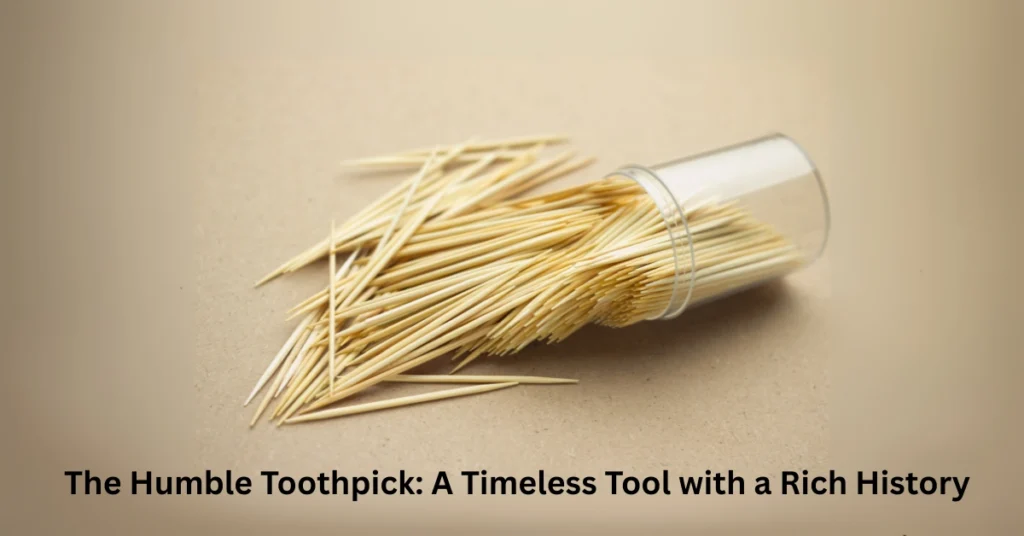Few objects are as common and seemingly simple as the toothpick. You find them in homes, restaurants, and even tucked into pockets. This small, pointed stick is an everyday essential for countless people. Yet, beneath its unassuming exterior lies a fascinating history of toothpicks, stretching back millennia. It offers surprising insights into human ingenuity and hygiene practices across civilizations. Far from a modern invention, the toothpick is one of humanity’s oldest personal care tools, predating forks and even spoons.
Ancient Origins: The First Toothpicks
The story of the toothpick doesn’t begin in a factory, but in the most primitive human settings. Archaeological evidence suggests our ancient ancestors were the first to recognize the need for interdental cleaning. Grooves found in the teeth of Neanderthals and early Homo sapiens, dating back tens of thousands of years, indicate the use of rudimentary tools. These were likely twigs, splinters of bone, or sharp grasses. They used them to dislodge food particles. This makes the toothpick, in its basic form, a Stone Age invention of toothpick, born from necessity for oral hygiene and comfort.
As civilizations developed, the sophistication of toothpicks grew. The Roman Empire, known for its hygiene advancements, utilized elegant ancient toothpicks made from bronze, silver, and even quill. Similarly, ancient Greeks used mastic wood twigs, which also offered a pleasant aroma. In China, intricate toothpicks crafted from bamboo and ivory have been unearthed from ancient tombs. These early versions weren’t just functional; they were often symbols of status and refinement, reflecting an owner’s attention to personal grooming.
The Rise of Mass-Produced Wooden Toothpicks:
While the concept of the toothpick is ancient, its widespread availability as a mass-produced item is a relatively modern phenomenon. For centuries, toothpicks remained largely a DIY affair or crafted by artisans. The game-changer arrived in the 19th century with significant advancements in manufacturing. This led to efficient wooden toothpick production.
The credit for mass-producing the wooden toothpick as we know it largely goes to Charles Forster of Maine, USA. In the 1860s, Forster visited Brazil. He observed local workers using sophisticated machines to produce toothpicks from wood. Inspired, he brought the idea back to the United States. He eventually established a factory in Strong, Maine, which became known as the “Toothpick Capital of the World.” Forster’s company, using specialized machinery, produced vast quantities of uniform, hygienic toothpicks. This made them affordable and accessible to the masses. He even employed Harvard students to dine in restaurants and subtly ask for toothpicks, creating demand and popularizing their use.
Amazing and Interesting Toothpick Facts:
Discover some fascinating toothpick facts you might not know:
- Older Than Cutlery: Toothpicks are older than forks, knives, and even most forms of spoons! Humans were cleaning their teeth long before they developed sophisticated eating utensils.
- Micro Art Medium: Toothpicks have become an unlikely canvas for miniature art. Artists around the globe meticulously carve, paint, and sculpt intricate designs onto the tiny wooden shafts. They create astonishing works often requiring a magnifying glass to appreciate.
- Architectural Wonders: Beyond art, people have used toothpicks to construct incredibly elaborate and detailed architectural models. These include entire cities, bridges, and famous landmarks. These toothpick structures often weigh hundreds of pounds, and builders spend thousands of hours to complete them.
- “Toothpick Capital” of the World: Strong, Maine, proudly holds the title of the “Toothpick Capital of the World.” This is due to Charles Forster’s pioneering efforts in mass production. The town even has a “Toothpick Monument” to commemorate its unique heritage.
- Edible Variations: While most toothpicks are made of wood, some cultures have developed edible versions. In parts of India, for example, fennel seeds and other spices are chewed after meals. They act as a natural breath freshener and gently dislodge food.
- Versatile Uses: Beyond oral hygiene, toothpicks have found an astonishing array of everyday uses of toothpicks: testing cakes for doneness, picking up small crafting items, applying glue, stirring drinks, and even as emergency splints for tiny fingers!
- The Longest Toothpick: While not officially recorded, individuals have attempted to create incredibly long toothpicks as novelty items or for Guinness World Record attempts. The challenge lies in maintaining the slender form without breakage over extreme lengths.
Also Read: From Gas Masks to Global Comfort: The Surprising Story of Tissue Paper
From a simple twig used by a Neanderthal to a mass-produced item found on every dinner table, the toothpick’s journey is a testament to human ingenuity and our enduring need for personal care. It’s a humble reminder that even the smallest inventions can have a profound and lasting impact on our daily lives. This simple tool connects us to a lineage of human behavior stretching back to the very dawn of our existence. So, the next time you reach for a toothpick, take a moment to appreciate the remarkable history and surprising facts behind this seemingly simple, yet truly timeless, tool.



